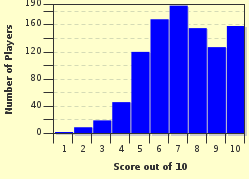Quiz Answer Key and Fun Facts
1. When a doctor is concerned about a patient's "cell count" he usually orders a CBC. What does CBC stand for?
2. Sometimes my patients are on a blood thinner called Coumadin (Warfarin) and they have to have a blood test every other day or every day, while in the hospital, to make sure their levels are therapeutic. This test is called what?
3. One of my patients complain of "burning while urinating," and I see that their urine is cloudy and it has a foul odor. I report these findings to the doctor and he ordered a U/A C&S. What does that mean?
4. When a doctor admits a patient with a history of Diabetes and he wants to see how her blood sugar has been over the past 2 to 3 months, he'll order a special blood glucose test called a _Glycosylated_Hemoglobin_. What is the common name of this test?
5. When a doctor is concerned about how well a patient's kidneys are working, they usually order a Blood Urea Nitrogen and Creatinine test. What is the common name for those tests?
6. Sometimes a doctor orders radiology tests. When he writes PCXR, what is he ordering?
7. At one of the hospitals I've worked, there is a policy that whenever you insert a Foley Catheter (F/C), you have to send a urine sample to the lab. Which of the following is that test?
8. Sometimes, a patient complains of chest pain. There are several tests that are ordered for chest pain, but one of the first is an EKG. What does EKG stand for?
9. When I'm taking care of diabetic patients, they usually have FSBS ordered AC/HS. What is a FSBS and what does AC/HS mean?
10. Sometimes a physician orders a BMP to measure the basic electrolyte levels in your blood. What does the acronym BMP stand for?
Source: Author
SnofireRose
This quiz was reviewed by FunTrivia editor
crisw before going online.
Any errors found in FunTrivia content are routinely corrected through our feedback system.

